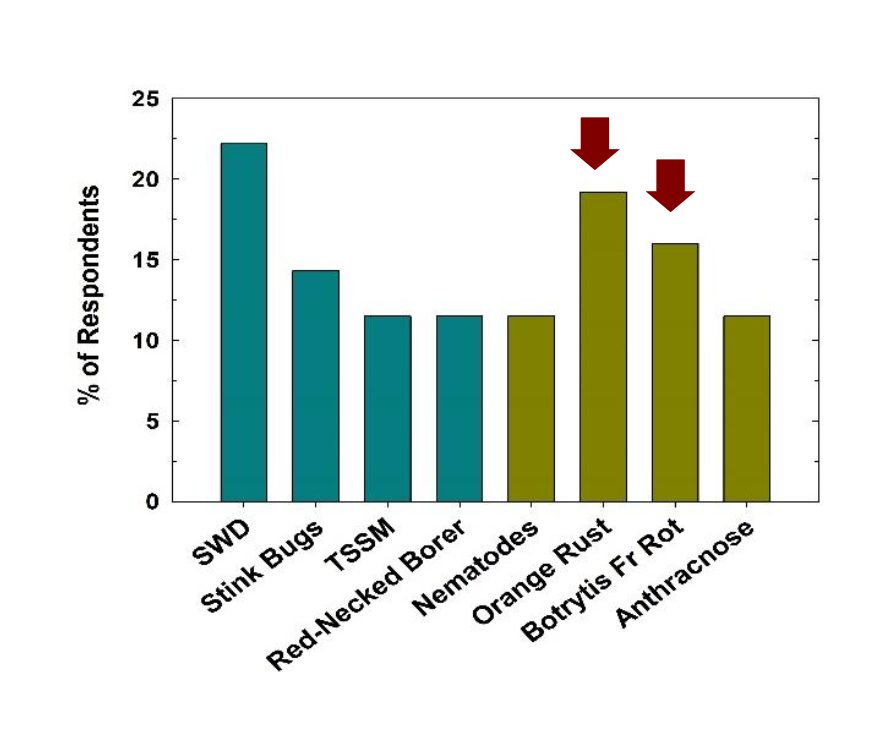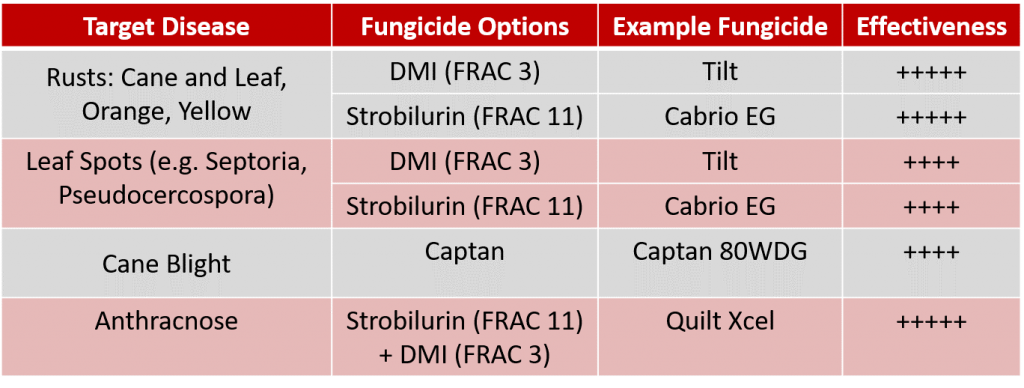Dr. Sara Villani, North Carolina State University
Get those (sprayer) engines started! If your blackberries have not shown green tissue yet, temperatures in the Southeast during the last week of March likely aided in its emergence. Before even adding a pesticide to your sprayer this spring, one the most important money-saving measures you can make is sprayer calibration!. Not only can worn nozzles cause drift onto non-targets you can also end up wasting a lot of money in spraying excess pesticide! Just imagine if each of the 10 nozzles on your airblast sprayer was worn 10%. If you had $50/acre of pesticides in your tank, this would result in an additional cost of $5/acre. Now multiply this over your entire operation and an entire season!
For Sprayer Calibration Instructions, visit Calibration on the Pesticide Environmental Stewardship website.
Fungicide Options through Bloom
Once sprayers have been calibrated, it’s time to start strategizing about early-season fungicide applications. When developing your program, my #1 rule is to build it around the disease of greatest concern (i.e. most devastating) and/or those with the most limited fungicide options. Other important considerations that should be taken into account regarding pesticide choice and application frequency timing are: the planting’s history of a particular disease, host phenology or growth stage, weather conditions, and fungicide resistance. For example, results of a 2019 survey in the S.E. suggest that Botrytis fruit rot is a primary concern for S.E. caneberry producers. Given the limited arsenal of fungicides due to multiple resistance development in this pathogen and the humid climate of the region, you may want to consider positioning newer SDHI (FRAC 7) fungicides during critical periods for infection.

Of course, in a perennial cropping system like blackberries, it’s important to keep all diseases in check. Below is an overview of fungicide management considerations through bloom.
Bud Swell to Green Tip:

Shoots 6″ long through Prebloom; Include a multi-site protectant such as captan for resistance management:

Bloom (Early + Full): Same options as above for rusts, leaf spots, anthracose, and cane blight.

Fungicide Resistance Management
Resistance to multiple single-site fungicides should be a major concern for fruit growers in the Southeast. Fungicides are not inherently mutagenic, but rather select for resistant fungal isolates (e.g. spores) that are naturally hanging out in the field. Consider these resistance management steps to help extend fungicide efficacy and to mitigate crop loss due to resistance:
- When practical, utilize fungicides that target multiple enzymes of the pathogen (“multi-site protectants”; captan)
- Alternate between FRAC Groups: As a general rule, do not apply more than 2 sequential applications with the same mode of action
- Tank mix single-site fungicides (e.g. Rally, Cabrio, Kenja) with a multi-site protectant
- Practice good application strategies
- Don’t exceed seasonal limits within a FRAC group
- Ensure sprayer is calibrated annually
- Apply prior to infection events
- Adopt cultural practices aimed at inoculum reduction. While this article focused on disease control using fungicides, cultural practices such as vigor management, floricane destruction, and pruning out infections are imperative facets of any successful integrated disease management program in blackberry.